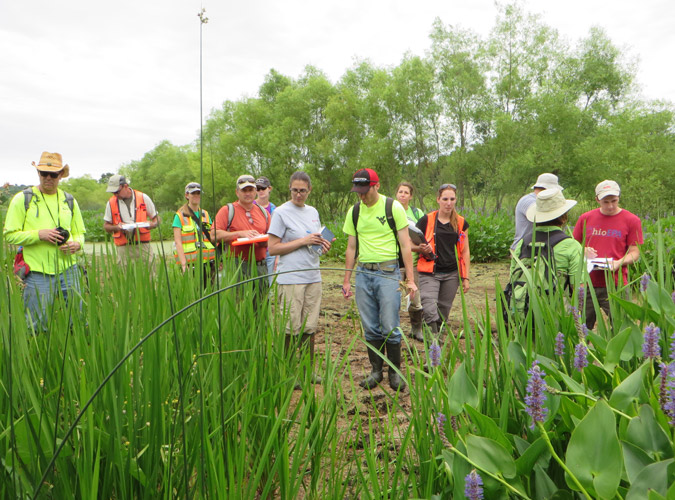This four-day class is designed for individuals who have taken MBI’s or another Identification of Common Wetland Plants, VIBI, or Wetland Delineation course but may not have the necessary botanical background to identify all the plants they encounter when conducting wetland delineations and other wetland assessments. Being able to identify the species of plants present in a wetland can greatly increase anyone’s understanding of the extent and ecological condition of the wetland. Plant identification is of high importance in conducting accurate wetland delineations and any wetland assessment method outcome is more reliable when the user has strong botanical skills. Becoming a competent botanist can seem like an insurmountable task; MBI has designed our Wetland Botany course to present participants with an achievable way of getting them fully prepared to identify the plant species they encounter.
Days One To Four – Combination of Classroom, Field, Lab, and Herbarium Training
During this course we will train individuals in botany skills through a combination of field, classroom (lecture and computer resources), laboratory, and herbarium training. Utilizing several regional keys, participants will learn to identify the plants they encounter. Field time will be spent visiting and collecting plants in central Ohio wetlands. Plants collected in the wetlands will be keyed out and identified during in-the-field sit down sessions and/or at the Ohio State University Olentangy River Wetland Research Park Laboratory. At the lab we will utilize microscopes to assist in the identification of wetland plants with an emphasis on grasses, sedges, and rushes. We will also take a visit to the Ohio State University Herbarium to learn how preserved plant vouchers can aid in plant identification. The final day will include a test of attendees’ plant identification abilities.
Course Materials
All participants will be supplied with a number of books with keys and illustrations that will equip them to become better botanists. These books include: Steve Chadde’s “A Great Lakes Wetland Flora” and “Ferns of the Midwest”; Lucy Braun’s “The Woody Plants of Ohio”; and Lawrence Newcomb’s “Wildflower Guide,” all of which will be used in the course.
Recommended Background
Some introduction to plant taxonomy in school or otherwise, and previous identification of plants in the field or laboratory using keys or working from memory is recommended. Participants should also have the ability to use dichotomous keys and their associated botanical terminology, and to identify wetland plants, both in the field using a hand lens or under a microscope in the laboratory.
Results
Participants will learn the correct ways to key out plants both in the field and laboratory. They will also be exposed to the botanical nomenclature needed to make the correct decisions when working through dichotomous keys. Participants will receive a certificate documenting successful course completion.

